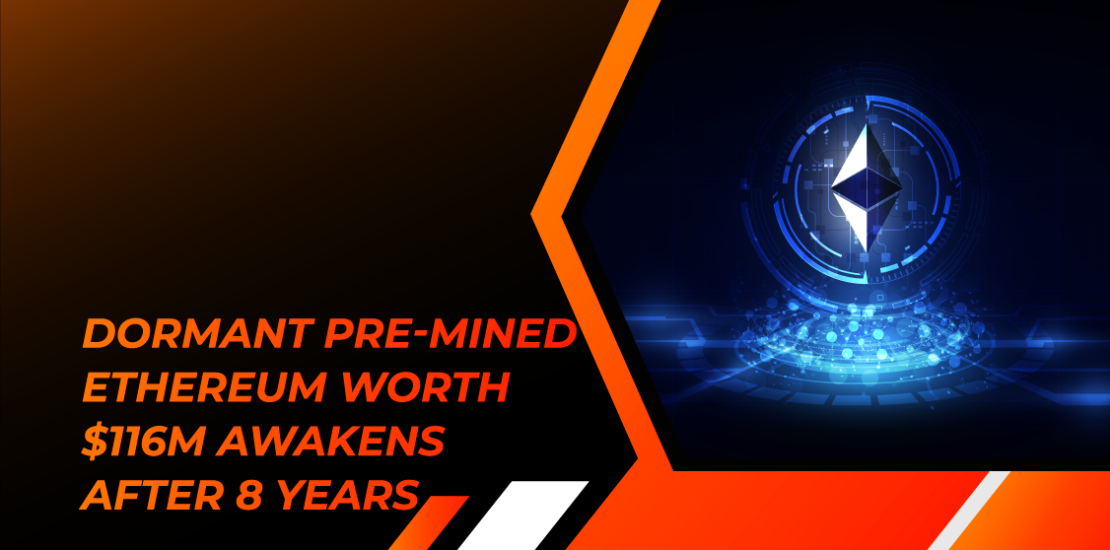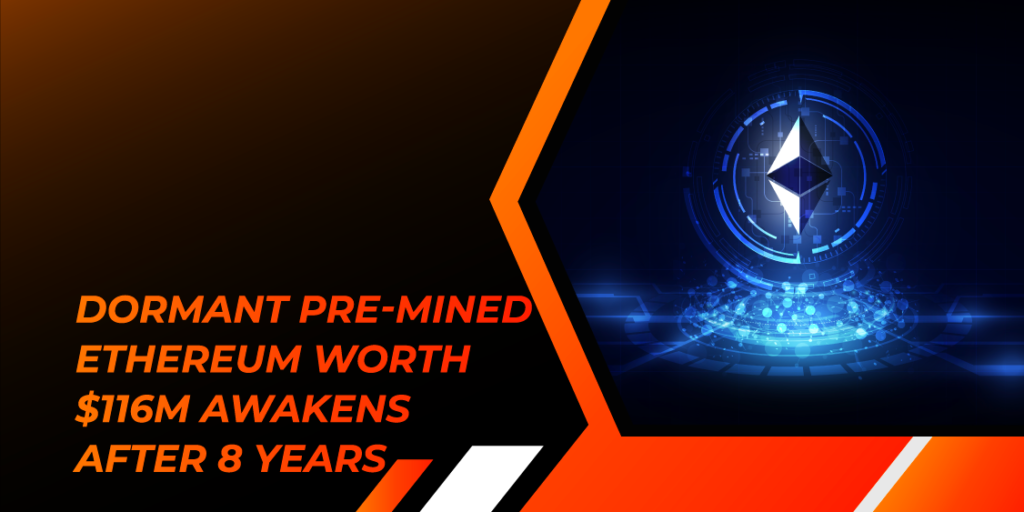- July 20, 2023
- Posted by: [email protected]
- Category:


In a remarkable turn of events, a dormant wallet address containing pre-mined Ethereum, once valued at approximately $20 million during the early days, has reawakened after eight years, now holding a staggering worth of over $116 million.
The genesis of this Ethereum accumulation can be traced back to June 2014 when the network conducted a sale event, allowing early team members and co-founders to partake in the pre-mining process, accumulating Ether at a time when the network couldn’t autonomously generate tokens.
Back then, Ethereum’s trading value hovered between $300 and $400, setting the wallet’s worth at an estimated $20 million. However, fast forward eight years, and the value of these tokens has soared to over $116 million at the time of this writing.
On July 18, at 7:30 pm Eastern Time, Etherscan data confirmed the startling development as the 61,216 pre-mined ETH tokens were transferred to an address linked to the Kraken cryptocurrency exchange. The transaction fees for this colossal movement amounted to a mere $1.5, accompanied by a gas price of 25.475673161 gwei, exemplifying the efficiency and cost-effectiveness of blockchain transactions.
The identity of the wallet owner remains shrouded in mystery, but this event serves as a powerful testament to the investment strategy of hodling, which prioritizes the long-term accumulation of cryptocurrencies. The wallet owner’s patient approach is evident as they took precautions to avoid any potential loss of funds due to human error. Before initiating the whale transaction, a test transfer of 0.05 ETH was sent to the Kraken address to ensure a smooth process.
As the crypto space continues to evolve, Ethereum co-founder Vitalik Buterin has highlighted the potential benefits of account abstraction extensions, often referred to as “paymasters.” These extensions would allow users to pay fees with the same coins they are transferring, streamlining the overall experience.
However, while the prospects of account abstraction are promising for users, developers still face challenges in upgrading current Ethereum externally-owned accounts (normal user accounts) into smart contracts through Ethereum Improvement Proposals. Ensuring compatibility with layer-2 solutions is another hurdle that needs to be addressed to harness the full potential of this technological advancement.
The sudden resurrection of the dormant pre-mined Ethereum serves as a captivating tale of how time, patient investment strategies, and the ever-evolving nature of blockchain technology can turn a modest investment into a multi-million dollar treasure. As the crypto landscape continues to unfold, the industry eagerly anticipates further developments and advancements that can potentially reshape the financial world.



